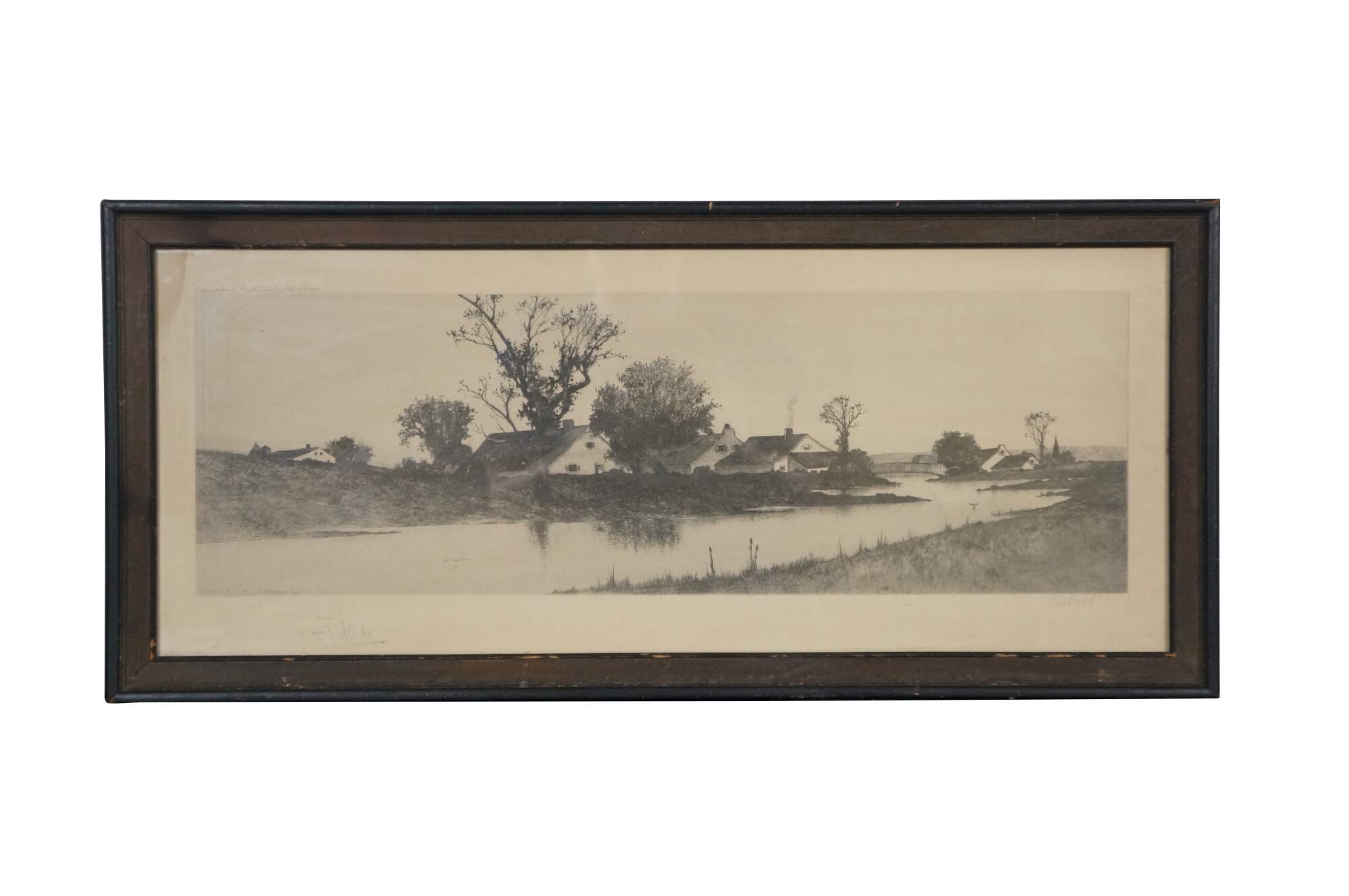
Shipping:
Free Shipping Included
Delivery:
Estimated 2-15 Business Days
Payments:
Credit Card, Check, Cash, PayPal, Apple Pay, Venmo
Returns:
30 Days 100% Money Back Guarantee, Buyer Pays Return Shipping
Description
Late 19th century black-and-white etching by Ernest C. Rost. Panoramic landscape of a small country village or farm viewed across a river. Signed in plate EC Rost 98 Copyright NY. Remarques of lake edge plants in lower left. Pencil signed lower right. Wood frame with raised black border; no mat.
"Ernest Christian Rost - American, 1866 - 1940 - Ernest was born on January 20, 1866, at Mt. Vernon, N.Y., and was probably the son of Christian Rost (a locally known engraver) and Minna M. Rost. Nothing is known of his childhood except that he was the fourth of six children in the family. By the mid-1880s, E.C. Rost was exhibiting landscapes in oil at the National Academy of Design, New York City. After 1887, his oil painting stopped, and by 1891, etching became his primary occupation. Today, the Library of Congress (Prints and Photographs Division) maintains 63 etchings signed 'Ernest C. Rost' or 'E. C. Rost', with dates running from 1891 to 1896. These often portray country lanes, cottages, rural scenes, sea, river, and bayside settings, mostly in New York State, but several depict homes of famous statesmen and writers. With the outbreak of the Spanish-American War, Rost was sent by the U.S. War Department to Cuba, Puerto Rico, the Philippines, and Guam as a civilian photographer of military operations and installations. Today, 21 photographs taken by E.C. Rost of these islands are held by the National Archives (Audio-Visual Division), while still another 26 photographs, all of Cuba, are held by the Library of Congress. In 1894, he sued his agents, Fishel, Adler, and Schwartz Co. for the sale of his etchings as artists’ proofs to which his signature had been forged. He went to the shop and bought 2 of these fo $.90 each, whereas Ernest testified that they were worth $5 each. He was so angered by the lawsuit experience that he never again etched. By 1898, Rost had apparently given up etching and entered photography full-time. Still, photography was not his only occupation during this time period, for he began writing, too. Between 1899 and 1900, at least 7 articles by Rost appeared in the popular 'Leaslie's Illustrated Weekly Newspaper.’ (Source: Iowa State University Museum)
Condition
Wear and distressing, foxing, discoloration, damage to frame, water spots
Dimensions
24.5" x 1" x 11.25" / Sans Frame - 22.5" x 9" (Width x Depth x Height)
You May Also Like